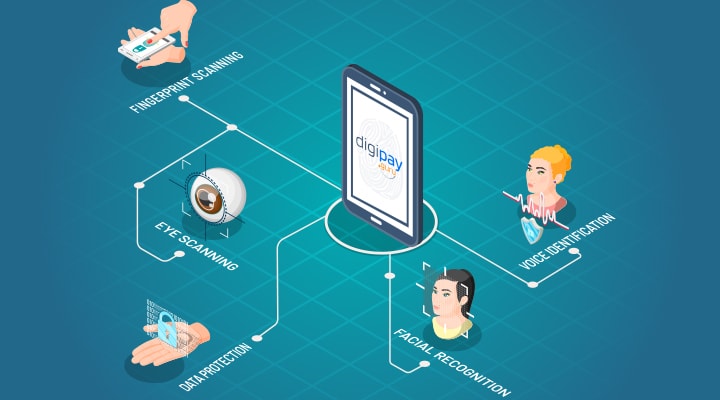
FinTech is a common term that stands for Financial Technology. It also predictably means that both finance and technology blending together to contribute and advance innovative solutions for helping financial institutions and other service providers serve better for their customers. Fintech mainly operates on technologies like artificial intelligence, blockchain, eCommerce, biometrics, and many more. In this blog let us see about Fintech trends in 2021.

With the technological advancements in recent days, fintech is experiencing the acceleration of constructive changes. Advancements in technology and are meant to help businesses to serve better and for their clients who utilize these services to navigate risks. Especially in the financial industry, these advancements help customers to avoid overspending and better manage their finances.
From open banking to biometric security, the trends in the fintech industry keeps evolving. The blog highlights some of the latest trends in fintech software development that may convert a finance-related application into a high demand product.
Top financial areas and services industry trends
There are several new-age software provided by FinTech companies that create easier and effective connectivity between banks and consumers. Hence, there are also fewer requirements for banks to build their own solution.
After a big year of digitalization, the FinTech industry looks keenly to enter a more dynamic growth phase due to continuous advancement and changing customer behavior.
1. Digital banking
Due to pandemic and lockdown, most of the customers were confined to their homes, and hence the need to visit banks or other financial institutions had predominantly declined. With the advancement in technologies such as Cybersecurity, Artificial Intelligence, Biometrics, and open banking, internet banking has made it more convenient than ever. Most of the users are now able to access their statements or other financial information or perform some significant tasks with just a few clicks. A survey conducted by Boston Consulting Group across 15 countries showed that over 44 percent of people with 18-to-34-year age category have enrolled in mobile or online banking for the first time during the pandemic.

Furthermore, the covid-19 crisis has accelerated paperless banking as people are convenient with online conversation, and it sees
ms that digital banking will play a potential role in 2021. Though there is a slight drop in the investment rate, which is $137.5 billion in 2019 compared to $141 billion in 2017, the FinTech industry has experienced positive growth in its major sectors
Below are some statistics that demonstrate the growth of financial apps in various countries during this pandemic:
Japan 55%
Korea 35%
The United States 20%
China 20%
Italy and Germany 15%
What to Expect?
Automation
Banks and other organizations adopt the latest technologies to facilitate the process of automation to simplify the employee’s work process, reduce costs, and increase internal efficiencies.
Digital Banking
Financial institutions will possess great pressure to offer digital functionality like sending money to peers, setting up a bank account, and sign up for a credit card in a fast and simple way.
Data Personalization
With the advancement of digital technology, personalized experience online becomes highly essential. Financial service providers leverage advanced analytics and data to offer personalized insights and content to customers.
2. Open Banking
Open banking seems to have generated $7.29 billion in 2018 and is expected to reach around $43.5 billion by 2026. Marketers see it as a revolutionizing technology that brings banks and FinTech together and enables networking across institutions. Directly associated with PSD2 (Second Payment Services Directive), it requires banks to share their data in a standardized and secure form for information to be shared and accessed easily between authorized organizations online. It lets control of customer banking and other financial-related information by third party applications through data sharing with the support of AI and APIs.
What to expect?
The emerging trend can provide access to open banking products or services that promote better financial decisions, lower debts, long-term wealth generation, which can predominantly benefit the FinTech workers, Consumers, Banking Institutions, API industry figures, and even other social communities.
Open banking associations can offer customers a truly consolidated perspective of their financial accounts so they can easily manage their finances.
Beyond the traditional perspective, there is huge potential for great new services with great revenue opportunities. Innovative banking solutions with seamless CX at the front end and various interconnected providers in the background may become the new norm in the near future. Some organizations are witnessing success with these new models.
3. RPA
Robotic process automation (RPA) can be defined as the automation process technology which utilizes Artificial Intelligence or digital workers or automation which is usually performed by humans. Many financial industries have implemented RPA to cut costs and enhance the overall organizational efficiencies.
Banks and financial institutions have implemented RPA digital workers to automate several back-end processes such as customer onboarding, security checks, account maintenance, trial balancing, mortgage processing, credit card, and many more.
The key benefit of RPS is that people can finish the tasks more quickly and efficiently, thus letting financial institution staff focus on key areas like customer service.
4. Biometric Security Systems
Digital financial services and mobile banking services open new opportunities for efficiency and ease. Though this is a new transformation, it brings a new challenge in the form of data security, and the biometric system is the ultimate solution to this problem.

Though biometric is not a new technology and has been in use for quite a long time, this was never utilized in the mainstream or had been supported by any sort of central banking guidelines. It also provides voice recognition ability that assists in validating the user identity. Though biometrics have been in limited usage, a lot more can be implemented. Most of the banking and financial service apps use fingerprints for user authentication. Some banks do utilize voice to authenticate the users, and they have not fully evolved to assist full-fledged transactions with Fintech trends.
As a sophisticated solution, it provides users the assurance that their personal information is given top priority and safeguarded. What is even more assuring is that this technology and innovation will undergo a facelift as contact-based biometrics sensors progress towards growth. It seems that due to the popularity and growth of contactless solutions, biometric will also go contactless.
India’s Aadhar (Unique Identification Authority) possesses a complete database of biometric information that happens to be the largest biometric repository in the world. Aadhaar has launched a new initiative called Aadhaar-based Payments, so the usage of biometrics is anticipated to leverage more in the future of the banking sector.
Takeaway
As we step into the New Year 2021, we may witness all the above-mentioned trends and predictions may take better form. These trends will result in a faster transaction, better transparency, and better assistance to the client, and improved availability of the financial data. The FinTech trends will gain tremendous traction in the long run. Financial services that take advantage of these trends and technology then they can create a top-notch FinTech solution that provides a secure, convenient, and simple for consumers to manage finances.
No Comments